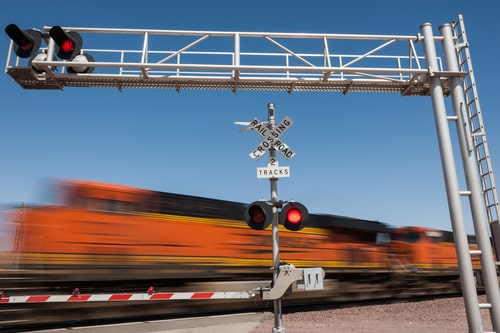Railroad workers are protected by a very plaintiff-friendly law called the Federal Employers Liability Act (FELA). One of the provisions under that act, or the way that courts have interpreted it, is the requirement that railroads provide employees with adequate equipment and assistance in lifting or moving equipment.
Our FELA lawyers have many clients who call our office because they have suffered an injury during a lift or when trying to manipulate some equipment. Their initial thought is, well, it’s my fault because I was lifting the piece of equipment or trying to move it, and nobody else was involved in the incident. That’s not the case under the law. Under the FELA, if you’re involved in an incident that requires lifting that more than one person should have to lift safely, there’s a basis for a claim.
If you’ve been hurt while working for the railroad, the team at Shapiro, Washburn & Sharp is here to help. We handle cases on a contingency-fee basis, meaning you won’t pay any legal fees unless we win your case. Contact us today at 833-997-1774 for a free consultation.
What Is a Railroad’s Duty to Warn Under FELA?
The Federal Employers’ Liability Act, or FELA, imposes a duty to warn on railroads. This means that Amtrak, CSX, Norfolk Southern, and similar freight and passenger railroad companies can be held liable for negligence when they do not warn their employees of inherently dangerous conditions when such conditions exist or when the companies have knowledge about those conditions. The duty to warn also exists when a railroad should have known about a danger if the company was exercising reasonable care in providing a safe workplace for its employees.
This duty to warn can be invoked in a FELA lawsuit by a rail worker who suffered an injury or developed an occupational disease such as cancer after not being warned of dangerous conditions. A family member of a former railroad employee who brings a wrongful death claim under FELA can also invoke the defendant railroad’s duty to warn.
When a railroad fails to warn workers about a known or likely danger, the company is negligent and creates a more dangerous workplace than it would have been had a warning been issued. Without danger warnings, any injury, death, cancer, or other occupational illness may well be said to have resulted in whole or in part from the railroad’s negligence.
The often-cited decision in Terminal Rail Assoc. of St. Louis v. Howell, 165 F.2d 135 (8th Cir. 1948) established this reading of rail worker health and safety protections under FELA. Dangers railroads have historically failed to warn employees about exposure to cancer-causing asbestos, radiation, and diesel fumes. The Terminal Rail case involved doors that could cause injuries.
What Is Industrial Hygiene and Safety Analysis?
Several types of inspections that rail companies must conduct fall into a category known as industrial hygiene and safety analysis. Industrial hygiene has historically been defined as the identification, evaluation, and control of toxic substances and harmful physical agents in the workplace.
All companies have legal responsibilities to adhere to generally accepted industrial hygiene principles. Pretty much everyone, including health professionals employed in the railroad industry, agrees on the value of these baseline industrial hygiene principles. Many of them predate modern governmental regulations, with a few having their origins in ancient Greece and Rome.
Railroads, however, have additional industrial hygiene rules they must follow and standards they must meet. This makes sense because working in rail yards, on tracks, and in and around trains often puts rail employees at risk of being exposed to asbestos, cancer-causing diesel fumes, and radiation. Inspections of railroad properties, equipment, and procedures must be thorough enough to verify and reaffirm that the company is following the rules and meeting the standards for protecting its workers from on-the-job exposures and occupational diseases.
What Steps Should a Railroad Worker Take if Injured?
If you’re involved with an injury that occurred while you were trying to lift or manipulate some type of heavy equipment or materials, it is important to get some type of note or basis that gives a description of the weight and the size of the material. It’s also important to talk to your coworkers and union reps to see if there have been any complaints or prior injuries arising from the same type of movement. Anything to provide notice to the railroad that what they asked you to do was unreasonable.
Can Your Personal Injury Law Firm Help?
Pursuing a FELA claim is crucial for railroad workers who have suffered injuries due to employer negligence. The FELA process can be complex, so seeking legal guidance early on can help you navigate the intricacies of your claim and work towards obtaining the compensation you deserve for your injuries and losses.
Contact Shapiro, Washburn & Sharp today at 833-997-1774 to schedule a free consultation with an experienced FELA attorney. Let us help you seek the justice and compensation you deserve.
